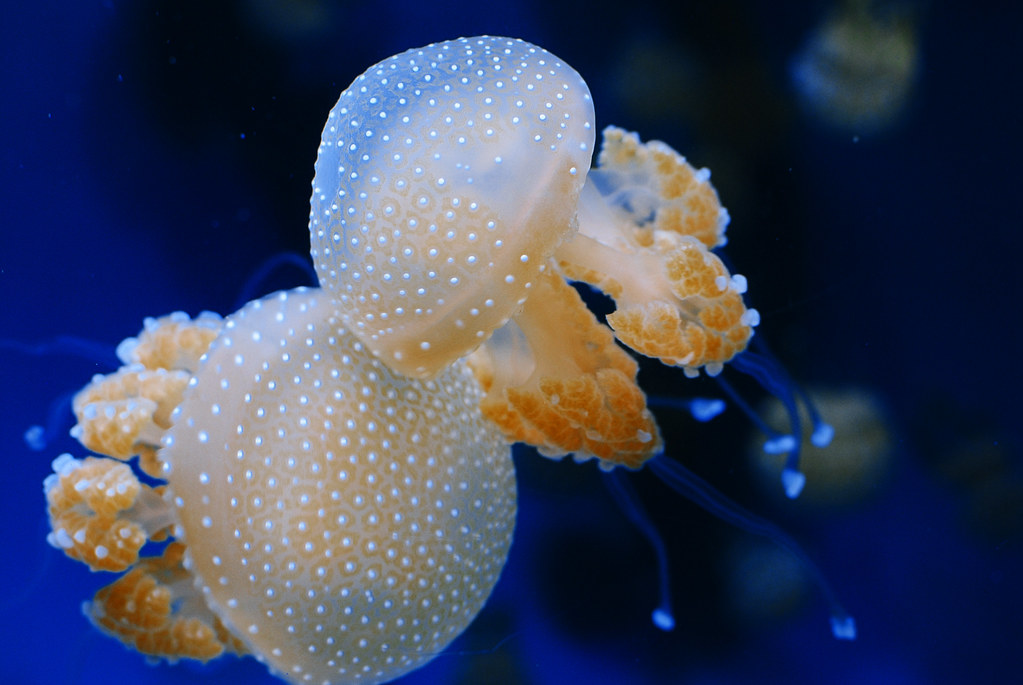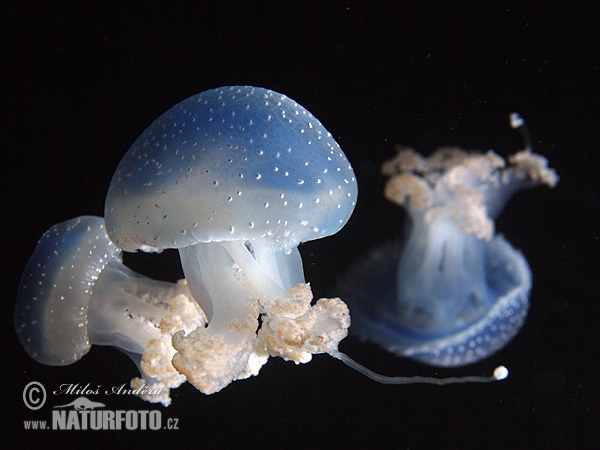


As larger oceanic creatures are fished out, there is more food for jellyfish.

Many species of New Zealand jellyfish were first described in other parts of the world, a number by German biologist Ernst Haeckel, who illustrated them vividly, particularly in Kunstformen der Natur (opposite).Įvidently something is out of balance, but, as many species suffer, the jellyfish prospers. (left) broods many thousands of planula larvae that make up the white-edging of her oral arms. According to numerous scientists, these blooms suggest that all is not well within the ocean, perhaps something to do with climate change, pollution, overfishing, or a combination of all three. In recent years, there have been reports from all over the world of uncommonly large blooms of jellyfish driving people out of the water, suffocating commercial fish farms and clogging up fishing nets and the intakes of ships and power plants. And while hundreds of people will turn up to rescue a beached whale, few of us would stop to re-float a stranded jellyfish.Īnd yet humans are probably responsible for what seems to be an international jellyfish explosion. If we see them in the water, we tend to get out. We don’t generally hold jellyfish in great regard. They have a pouch for a stomach that doubles as the reproductive system, a mouth that doubles as an anus, and the rest is mostly water and a bundle of nerves.ĭuring the Renaissance, jellyfish were thought to be plants, and while 18th century naturalists allowed them entry into the animal kingdom, they were initially classified as zoophytes, something between plants and animals. Jellyfish keep things simple: no heart, no brain, no circulatory system and no bones. For shrimps and small fish, pelagic jellyfish of this sort act both as a floating cafe and a predator fence as they drift in open seas. capillata), or-if there are raised gelatinous warts on the (unseen) surface of its bell-the recently-described endemic species of Cyanea. This animal is likely to be a lion’s mane jellyfish (C. Playing host to larval fish at a depth of 24 m off subantarctic Campbell Island, a large Cyanea sp. Photosynthesis – Australian Spotted Jellyfish gain their energy from photosynthesis, and so require the white light of your tank to be turned on for roughly 6 hours per day.Written by Margo White Photographed by Kim Westerskov They require feeding 1-2 times a day, and prefer a jellyfish tank with a moderate water flow setup, so their casual swimming can be accounted for. We provide our own live brine shrimp kits for you to easily hatch your own food, ready to feed straight to your jellies! We recommend to feed your Australian Spotted Jellyfish with Baby Brine Shrimp. We do not stock larger size Jellyfish, but be aware that your fish will of course grow depending on how much they are fed. ‘Small’ size (roughly 8cm (3 inches) in diameter).‘Juvenile’ size (roughly 2.5cm (1 inch) in diameter).We provide a mixture of sizes with our orders, there is no need to choose size. Our Jellyfish are sold at a young age, therefore offering you the maximum possible lifespan for your fish. We now have Australian Spotted Jellies back in stock! #pet #pets #jelly #fish #jellyfish #aquatics #aquarium #saltwater #australia #australianspottedjellyfish #jellyfishtank #petjellyfish #petsofinstagram #poig #petsofigĪ post shared by Pet Jellyfish on at 2:05pm PDT Australian Spotted Jellyfish Lifespan GuideĪustralian Spotted Jellyfish have a life span of around a year (roughly 12 months). Watch Australian Spotted Jellies in Action! Compatible with: None, must be kept only with other Australian Spotted jellyfish.Īustralian Spotted Jellyfish must only be kept in a tank with other Australian Spotted jellies.Food: Baby Brine Shrimp, alongside our Cubic Medusa Jellyfish Food.With no sting, these are some of the easiest jellyfish to look after, suitable for beginners or advanced jellyfish keepers alike.Īustralian Spotted Jellyfish are photosynthetic, and therefore will require a minimum of 6 hours of white light per day – most customers who keep photosynthetic jellyfish keep the white light of their tank on overnight, to adequately cater for this. Their semi-translucent bell means the lighting of our tanks shimmers through and ‘lights up’ the jelly with the colour of the lighting. Very similar in appearance to Spotted Lagoon Jellyfish, the difference with the Australian Spotted Jellyfish is that these jellies have long trailing tails, complete with white blob tips. Semi-translucent body with white spots, their body colour ranges from white, light brown, light blue and light green, all covered with white spots. Hugely pretty, the Australian Spotted Jellyfish are quickly becoming a favourite at Pet Jellyfish.


 0 kommentar(er)
0 kommentar(er)
